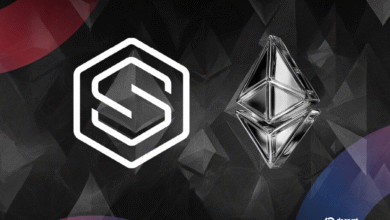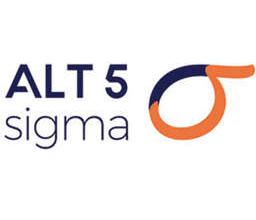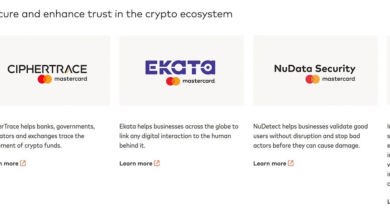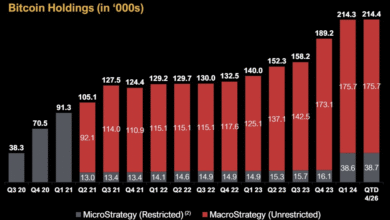Stakestone Cross-Chain Integration Revolutionizes DeFi
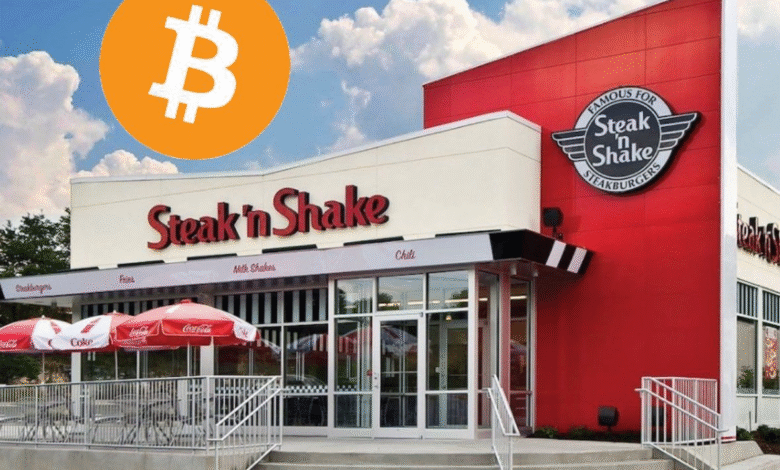
Stakestone cross-chain integration has officially launched, marking a significant milestone in the world of decentralized finance (DeFi). This powerful synergy enables seamless cross-chain asset transfers and innovative yield generation, all while allowing users to access capital without facing arduous lock-in periods. With the incorporation of the USD1 stablecoin, which supports fast and global transactions, Stakestone strengthens its position as an Omnichain liquidity protocol. Users can now engage with liquid tokens like STONE and SBTC across multiple blockchains, optimizing both liquidity and yield potential. This integration not only enhances the user experience but also sets the stage for a more connected DeFi ecosystem, where financial transactions can flow freely and efficiently.
The introduction of Stakestone’s cross-chain framework signifies a transformative leap in multichain connectivity within the DeFi landscape. By facilitating smooth exchanges of digital assets and bolstering yield generation opportunities, this innovative solution aligns perfectly with current needs in decentralized finance. The USD1 stablecoin, a robust financial instrument, plays a pivotal role in enhancing liquidity and streamlining transactions across diverse blockchain environments. This collaborative approach between Stakestone and its partners exemplifies a strategic effort to bridge gaps in liquidity, empowering users to participate in a more dynamic and inclusive financial ecosystem. Ultimately, this development represents a shift towards a more versatile and interconnected landscape for asset management.
Understanding Cross-Chain Asset Transfers in DeFi
Cross-chain asset transfers have emerged as a pivotal innovation in the decentralized finance (DeFi) landscape. They enable users to move assets seamlessly between different blockchain networks, solving the liquidity fragmentation issues that have historically plagued the space. This advanced capability not only facilitates quicker and more efficient transactions but also empowers users to leverage diverse yield generation opportunities across multiple platforms. With protocols like Stakestone, the vision of a truly interconnected crypto ecosystem is becoming a reality, allowing users to maximize their investment potential with ease.
By incorporating cross-chain asset transfers, DeFi applications can now offer users enhanced flexibility and greater access to liquidity. No longer confined by the limitations of a single blockchain, traders and investors can engage in activities that tap into different ecosystems. The integration of Stakestone’s protocol allows for the efficient movement of assets while earning rewards, opening doors to innovative strategies that blend risk and reward within the growing DeFi sector.
Stakestone’s Role in Omnichain Liquidity Protocols
Stakestone is at the forefront of the development of Omnichain liquidity protocols, which are designed to provide seamless liquidity across various blockchain networks. This system allows users to stake digital assets like ether (ETH) and bitcoin (BTC) to earn liquid tokens such as STONE and SBTC. By creating an omnichain framework, Stakestone ensures that users can access their rewards without sacrificing liquidity, which is essential for maintaining competitiveness in the fast-paced DeFi environment.
The integration of Stakestone’s innovative approach with the USD1 stablecoin issued by WLFI serves as a testament to the power of omnichain networks. Users can interact within diverse markets without the worry of locking their funds, thus fostering better participation in the DeFi space. This protocol not only enhances user experience but also encourages the creation of decentralized applications (dApps) built on its robust infrastructure, further advancing the state of cross-chain technologies.
The Impact of USD1 Stablecoin on DeFi Ecosystem
USD1, a fully collateralized stablecoin introduced by WLFI, is set to revolutionize how transactions occur within the DeFi ecosystem. Designed for fast, global transactions, USD1 enhances liquidity by providing stable value, making it easier for users to navigate the often volatile world of cryptocurrencies. When integrated with Stakestone’s cross-chain technology, USD1 can facilitate quick asset transfers across multiple platforms, allowing users to optimize yield generation without the worry of harsh volatility.
Moreover, the stability provided by USD1 encourages users to engage in a broader range of DeFi applications underpinned by Stakestone’s liquidity protocol. It allows for efficient yield farming, lending, and staking operations without compromising the user’s capital. As USD1 gains traction across various decentralized platforms, its role as a foundational asset in the DeFi movement is being solidified, paving the way for more robust and inclusive financial systems.
Yield Generation Opportunities with Stakestone and WLFI
Yield generation is an integral component of the DeFi ecosystem. Stakestone’s integration with WLFI empowers users to explore new pathways for generating returns through cross-chain asset movements and staking mechanisms. The possibility of earning rewards through liquid tokens, while retaining the flexibility of accessing those funds, makes participation in yield generation more attractive. By enabling users to stake their assets without lock-in periods, Stakestone opens the doors to dynamic investment strategies.
Furthermore, with the backing of established entities like Polychain Capital and Binance Labs, Stakestone creates an environment where yield generation can flourish. Developers are motivated to create yield-focused applications within the Stakestone ecosystem, knowing they can leverage USD1 for transactions. This combination cultivates an innovative space where users can maximize profits while minimizing risk, showcasing the potential of yield generation in a cross-chain environment.
Security and Compliance in Cross-Chain Finance
As the DeFi ecosystem grows, security remains a paramount concern for users participating in cross-chain transactions. Stakestone’s protocols embrace non-custodial security measures and are reinforced by audited smart contracts to ensure a secure environment for users. This focus on security not only builds trust within the community but also aligns with best practices necessary for compliance in the evolving regulatory landscape.
With the increasing adoption of DeFi projects, it’s essential for platforms like Stakestone to continue prioritizing security measures while innovating. Users can confidently engage in cross-chain asset transfers knowing their capital is safeguarded by industry-leading security protocols. The partnership with reputable entities further enhances Stakestone’s commitment to building a responsible and secure DeFi ecosystem, allowing users to focus on growing their assets without the constant concern of security breaches.
Innovations in Decentralized Application Development
The integration of Stakestone with WLFI establishes a solid foundation for developers aiming to create decentralized applications (dApps) in a multi-chain environment. By leveraging Stakestone’s robust infrastructure, developers enjoy plug-and-play access to capital that can be deployed across various blockchain networks. This fosters an innovative ecosystem where new applications can thrive, delivering unique experiences that cater to diverse user needs.
As the landscape of decentralized applications evolves, the ability to create and launch dApps that utilize cross-chain functionality becomes increasingly vital. Developers using Stakestone can tap into the benefits of USD1 for transactions within their applications, streamlining processes and enhancing user experience. With a focus on innovation and collaboration, the Stakestone and WLFI partnership cultivates an environment that inspires creativity and impactful solutions in the DeFi sector.
The Future of Cross-Chain Integration in DeFi
The future of cross-chain integration in DeFi promises increased efficiency and greater user access to diversified financial products. Stakestone’s collaboration with WLFI marks a crucial step towards this future, enabling users to execute transactions across different blockchains without limitations. Such advancements are crucial in addressing the liquidity fragmentation currently experienced in the DeFi ecosystem, leading to a more interconnected financial system.
By creating a more cohesive environment where assets can fluidly move between chains, Stakestone and its partners are setting the stage for a new era of financial inclusivity. The advancements in cross-chain technology herald an opportunity for users and developers alike to participate and innovate, making DeFi more accessible to a broader audience. As projects continue to focus on interoperability, the potential for yield generation and asset utilization is only expected to grow.
Capital Access and Its Importance in Decentralized Finance
Access to capital is a critical component of successful decentralized finance platforms. The recent integration of Stakestone with WLFI allows for streamlined access to capital enabling users and developers to swiftly fund their projects and investments. This accessibility is essential for fostering innovation and growth within the DeFi space, as it empowers users to experiment with new financial instruments and strategies.
As the DeFi ecosystem expands, the ability to provide quick and reliable access to capital through cross-chain protocols takes precedence. Stakestone’s developer hub exemplifies this commitment by offering tools and opportunities for builders in the community to deploy applications effectively. With the integration of stablecoins like USD1 facilitating transactions, users can confidently navigate the DeFi world and optimize their capital management strategies.
Facilitating Smooth Asset Movement with Stakestone
Facilitating smooth asset movement across various blockchains has been a significant challenge within the DeFi ecosystem. However, Stakestone’s advanced cross-chain integration with WLFI effectively addresses this issue, allowing users to transfer assets without encountering barriers. This capability not only enhances liquidity across different networks but also unlocks new market opportunities, contributing to a more vibrant and robust financial marketplace.
Users can now engage in DeFi applications with confidence, knowing they can freely move their assets and capital without the fear of being locked into clunky processes. The seamless movement of assets is enabled by Stakestone’s protocol, making decentralized finance more user-friendly and accessible while supporting the overarching goal of creating a truly interconnected financial system. This innovative approach is essential for the future of DeFi, fostering continual growth and development.
Frequently Asked Questions
What is Stakestone cross-chain integration and how does it benefit users?
Stakestone cross-chain integration enables seamless cross-chain asset transfers, allowing users to move their assets between different blockchain networks easily. This functionality benefits users by providing access to liquidity and earning sustainable yields without lock-in periods, promoting flexibility in decentralized finance (DeFi) applications.
How does Stakestone’s Omnichain liquidity protocol support cross-chain asset transfers?
Stakestone’s Omnichain liquidity protocol facilitates cross-chain asset transfers by allowing users to stake assets like ether (ETH) or bitcoin (BTC) in exchange for liquid tokens. These tokens maintain staking rewards while being usable across various DeFi applications, ensuring balanced yield and liquidity.
What role does the USD1 stablecoin play in Stakestone’s multichain ecosystem?
The USD1 stablecoin serves as a critical component in Stakestone’s multichain ecosystem by providing a fully collateralized and stable currency for transactions across different blockchains. This integration enhances the functionality of asset movement and liquidity within the Omnichain protocol.
Can users earn yield generation with Stakestone cross-chain integration?
Yes, users can engage in yield generation through Stakestone cross-chain integration by staking their assets to earn rewards while utilizing the Omnichain liquidity protocol. This feature allows for sustainable earning without the restrictions commonly found in traditional finance.
What are the security measures in place for Stakestone’s cross-chain integration?
Stakestone employs non-custodial security and audited smart contracts to ensure the safety of user assets during cross-chain asset transfers. This high level of security is complemented by support from reputable investors like Polychain Capital and Binance Labs.
How does Stakestone’s integration with WLFI enhance decentralized finance (DeFi)?
The integration with WLFI enhances DeFi by enabling users to use the USD1 stablecoin across multiple blockchain networks, promoting liquidity and reducing fragmentation in asset movement. This allows for a more fluid DeFi experience and encourages developers to build innovative applications.
Are there any lock-in periods when using Stakestone for cross-chain asset transfers?
No, Stakestone eliminates lock-in periods for cross-chain asset transfers, granting users the ability to access their funds freely while still participating in yield generation and liquidity opportunities within its Omnichain protocol.
How does Stakestone plan to address fragmented liquidity in DeFi?
Stakestone aims to address fragmented liquidity in DeFi by simplifying the process of asset movement across various chains through its integration with WLFI. This approach intends to create a more cohesive ecosystem where assets can flow seamlessly, thereby enhancing overall liquidity.
| Key Feature | Details |
|---|---|
| Integration Launch | Stakestone and WLFI’s integration is now live, enabling cross-chain asset transfers. |
| Stablecoin Utilization | USD1 is a fully collateralized stablecoin designed for fast global transactions within the Stakestone ecosystem. |
| Omnichain Liquidity Protocol | Stakestone allows staking of ETH or BTC in exchange for liquid tokens like STONE and SBTC. |
| Non-Custodial Security | The protocol uses audited smart contracts ensuring secure transactions without the need for custodians. |
| Developer Support | Stakestone provides resources and a developer hub for building applications across chains. |
| Goals of Collaboration | The partnership aims to enhance liquidity in DeFi and support innovation in real-world asset integration. |
Summary
Stakestone cross-chain integration marks a significant milestone in decentralized finance (DeFi), enabling seamless asset transfers across multiple blockchains. This integration not only allows users to leverage the advantages of the USD1 stablecoin but also ensures that their funds remain liquid and accessible without lock-in periods. Stakestone’s collaborative approach with WLFI promises to enhance liquidity and promote innovative solutions within the DeFi landscape, establishing a robust ecosystem for both developers and users.

